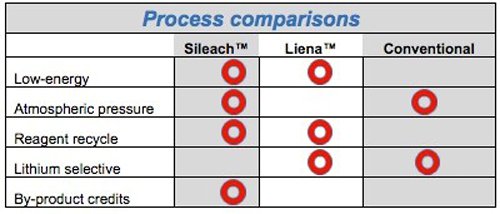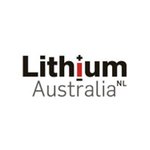Why Lithium Australia is developing more than one processing technology
Hey! Looks like you have stumbled on the section of our website where we have archived articles from our old business model.
In 2019 the original founding team returned to run Next Investors, we changed our business model to only write about stocks we carefully research and are invested in for the long term.
The below articles were written under our previous business model. We have kept these articles online here for your reference.
Our new mission is to build a high performing ASX micro cap investment portfolio and share our research, analysis and investment strategy with our readers.
Click Here to View Latest Articles
When it comes to processing mineral ores, there is no ‘one size fits all’ approach.
Yet since the earliest days of extracting lithium from silicates, there has been little in terms of improvements in the extraction process of the mineral.
For decades lithium minerals, primarily spodumene, have been roasted and leached, without an alternative method being proposed.
Lithium Australia (ASX:LIT) is attempting to reverse the trend by developing two technologies which could change extraction methods. Both technologies have have successfully eliminated roasting as a process step.
Seeing the value in this change is the Australian government, which has awarded LIT a second Federal Innovations Connections grant under its Entrepreneur’s programme. They join the state government which has provided a research grant through the Minerals Research Institute of Western Australia.
The most recent grant of $50,000 will be used towards testing LIT’s extraction technology.
Much like the electric car set to supersede petrol run vehicles, LIT’s chemical-processing technologies may soon replace the outdated roast and leach method used in the lithium industry for decades.
This is no guarantee to occur, however, so if considering LIT for your portfolio seek professional financial advice for further information.
The two processing foundations used in LIT’s technology are: halogens and hydroxides.
Why two types of technology and not one?
By having two types of ore processing technology, LIT is able to extract ore and tailor the optimum-processing outcome as various ore types respond differently to the two treatment methods.
LIT uses both the halogen and hydroxide chemicals in its trademark technologies:
- SileachTM (a halogen digest)
- Liena (a selective caustic leach)
The differences between the two LIT technologies and the current roast/leach method can be seen in the table below:

The 100% LIT owned Sileach and Liena technologies provide project specific advantages over conventional processing means, including environmental impacts.
Both technologies are capable of treating all lithium silicates, including the treatment of spodumene, which is the most widely produced lithium mineral.
In mining the size and quality of an ore body is a main driving factor in commercial success, but it is not the only one. Political support, infrastructure, logistics, reagent availability, power costs and the way power is delivered are but a few factors which companies need to consider. LIT’s technology is able to address some of these as listed above.
By potentially possessing two lithium processing technologies, LIT will tightly hold the lithium processing space, delivering what results have shown to be the most extensively evaluated and successful processing outcome.
The first process run for Sileach is imminent at the ANSTO Minerals’ (a division of the Australian Nuclear Science and Technology Organisation) pilot plant and has been wet commissioned.
The testing will be carried out using Western Australian concentrates from Lepidolite Hill (trilihionite) and Pilbara Resource’s Pilgangoora (spodumene) deposits.
Whilst Sileach will be targeted for Australian applications, Linea provides distinct advantages in certain locations such as Canada, Western Europe and Scandinavia where low-cost grid power is available.
Bench-scale testing of the Liena technology continues to impress with promising results.
LIT’s strategy is to establish global processing hubs, with the first Sileach processing hub to be established in Western Australia should testing of Pilbara Minerals’ spodumene concentrates be successful.
Each hub will use the processing technology best suited for the ore types found in that specific location.
The two processing technologies could enable LIT to deliver strong extraction solutions when required.
Testing is now underway.
General Information Only
This material has been prepared by StocksDigital. StocksDigital is an authorised representative (CAR 000433913) of 62 Consulting Pty Limited (ABN 88 664 809 303) (AFSL 548573).
This material is general advice only and is not an offer for the purchase or sale of any financial product or service. The material is not intended to provide you with personal financial or tax advice and does not take into account your personal objectives, financial situation or needs. Although we believe that the material is correct, no warranty of accuracy, reliability or completeness is given, except for liability under statute which cannot be excluded. Please note that past performance may not be indicative of future performance and that no guarantee of performance, the return of capital or a particular rate of return is given by 62C, StocksDigital, any of their related body corporates or any other person. To the maximum extent possible, 62C, StocksDigital, their related body corporates or any other person do not accept any liability for any statement in this material.
Conflicts of Interest Notice
S3 and its associated entities may hold investments in companies featured in its articles, including through being paid in the securities of the companies we provide commentary on. We disclose the securities held in relation to a particular company that we provide commentary on. Refer to our Disclosure Policy for information on our self-imposed trading blackouts, hold conditions and de-risking (sell conditions) which seek to mitigate against any potential conflicts of interest.
Publication Notice and Disclaimer
The information contained in this article is current as at the publication date. At the time of publishing, the information contained in this article is based on sources which are available in the public domain that we consider to be reliable, and our own analysis of those sources. The views of the author may not reflect the views of the AFSL holder. Any decision by you to purchase securities in the companies featured in this article should be done so after you have sought your own independent professional advice regarding this information and made your own inquiries as to the validity of any information in this article.
Any forward-looking statements contained in this article are not guarantees or predictions of future performance, and involve known and unknown risks, uncertainties and other factors, many of which are beyond our control, and which may cause actual results or performance of companies featured to differ materially from those expressed in the statements contained in this article. S3 cannot and does not give any assurance that the results or performance expressed or implied by any forward-looking statements contained in this article will actually occur and readers are cautioned not to put undue reliance on forward-looking statements.
This article may include references to our past investing performance. Past performance is not a reliable indicator of our future investing performance.

